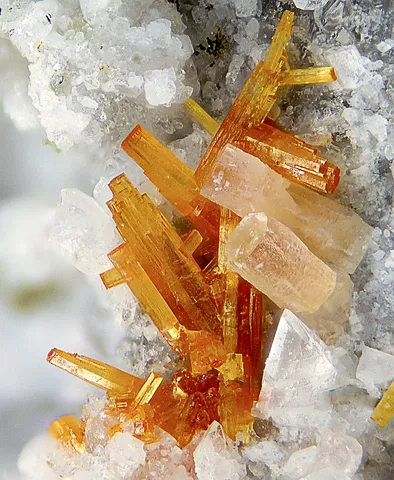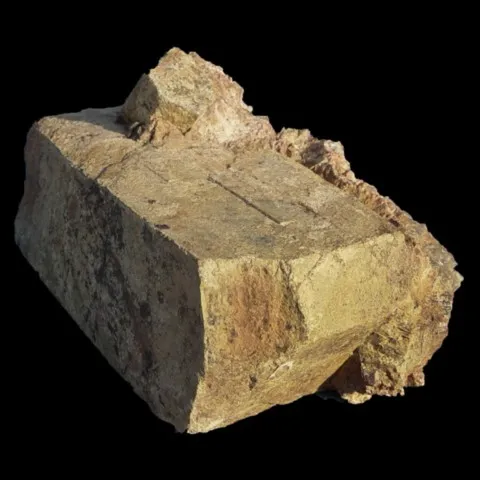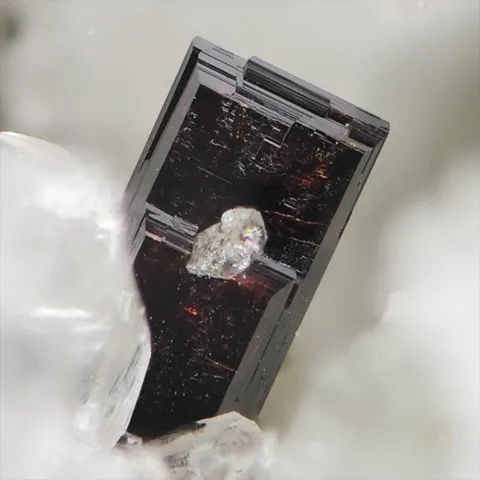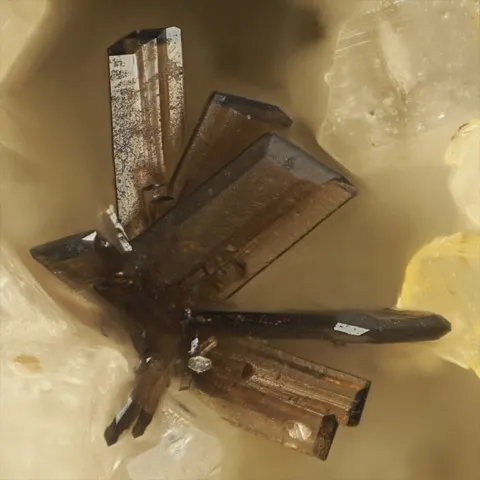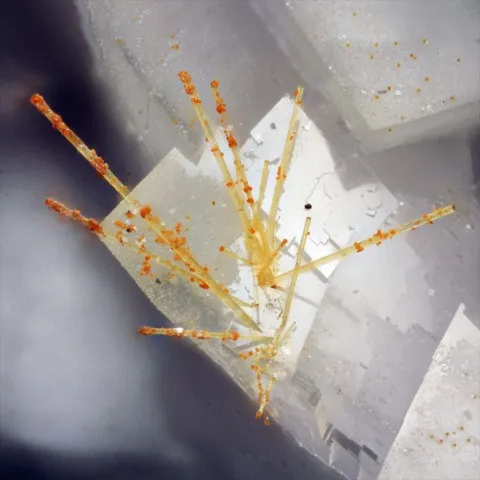AESCHYNITE
Class : Oxides and hydroxides
Subclass : Oxides
Crystal System : Orthorhombic
Chemistry : (Ce,Ca,Fe,Th)(Ti,Nb)2(O,OH)6
Rarity : Very rare
Aeschynite is now considered a group of complex oxides of titanium and niobium, subdivided into three minerals according to the dominant metal : aeschynite-(Ce), aeschynite-(Nd) and aeschynite-(Y). Its name comes from the Greek aeschyne (shame) because when it was discovered in 1828, chemists were unable to separate all its constituents. Aeschynite is a rare oxide of nepheline syenites, and more generally of alkaline syenites, more rarely of carbonatites and granitic pegmatites. Very resistant to weathering, it concentrates well in the placers. It is a black to yellow-brown mineral, often radioactive due to the fairly common presence of thorium (up to 30% ThO2), its crystals are striated, prismatic to tabular. It is a potential ore of thorium, tantalum, niobium and rare earth elements.
Main photo : Aeschynite-(Y) from Luserna Stone Quarries, Turin, Piedmont, Italy - © Giuseppe Finello
Aeschynite in the World
Aeschynite in France
Aeschynite-(Y) is present in France in microcrystals in certain alpine fissures, notably at Plan-du-Lac (Isère) associated with anatase, at the Grand Pic and the Pointe du Rozet (Savoie), in the Madone valley. des Fenestres (Alpes-Maritimes) and in the talc quarry of Trimouns (Ariège).
Twinning
No known twin for this mineral species.
Fakes and treatments
No known fakes or treatments.
Hardness : 5 to 6
Density : 5,19
Fracture : Conchoidal
Trace : Black to brown
TP : Translucent to opaque
RI : 2,26
Birefringence : Not measurable
Optical character : -
Pleochroism : None
Fluorescence : None
Solubility : Hydrochloric and sulfuric acids
Magnetism : Paramagnetic
Radioactivity : None

